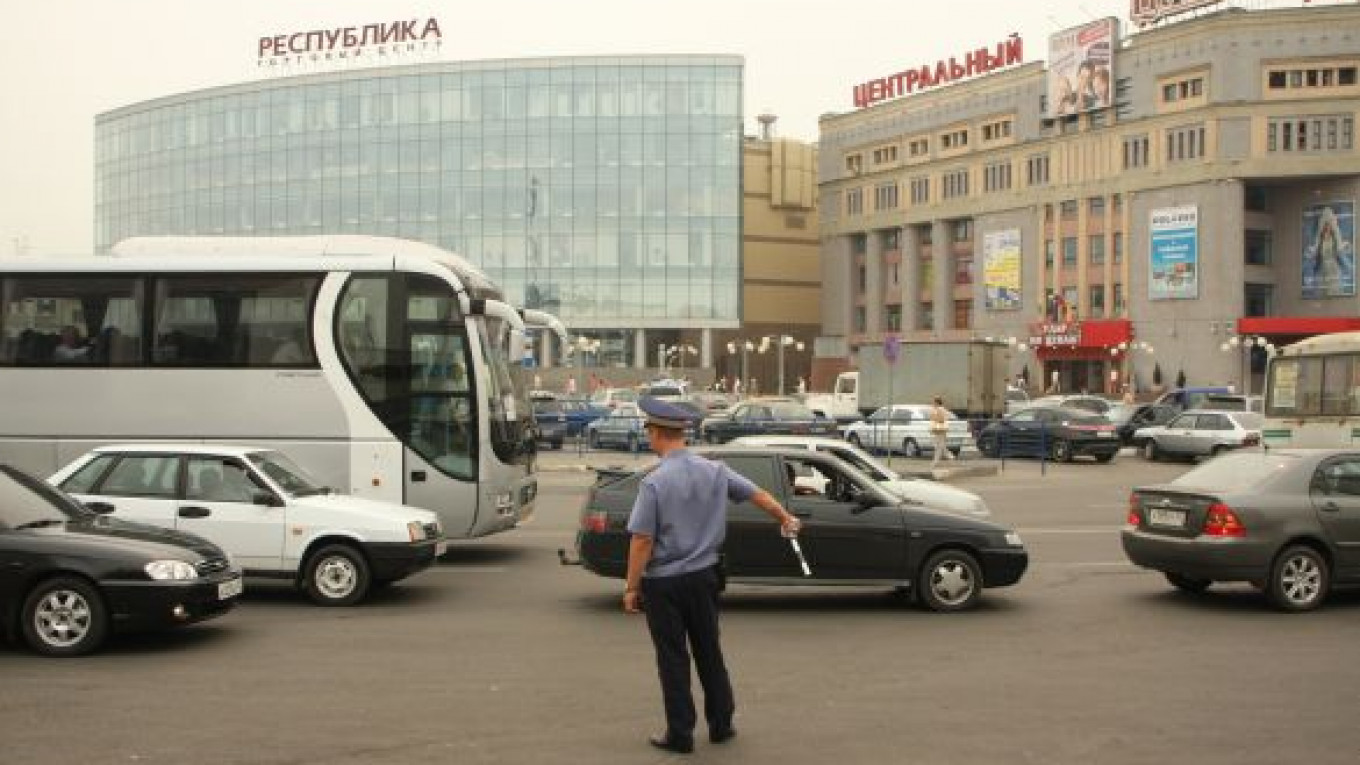Gone are the days when provincial residents had to travel to Moscow to get their hands on some specialty sausage or other deficit consumer goods.
Real estate experts are predicting that growth and construction of retail space in the regions will be the main trends in the future. Meanwhile, steeper competition in large cities will force some malls to choose between finding a niche and closing down for good.
Large Russian cities, with a population of 500,000 and more, are well stocked with retail space, said Ivan Fedyakov, general manager of analytical agency INFOLine. Ninety percent of malls that opened in the last seven years are located in these cities. Moscow accounted for 36 percent of new retail space in Russia this year, according to Cushman & Wakefield real estate agency. Novosibirsk, Yaroslavl, Kazan and St. Petersburg also completed major projects.
But cities with a population between 100,000 and 500,000 people still have a shortage of malls.
"The population in these areas is poorer than in cities with a million or more residents, but in the future the main battle will be precisely over this segment," Fedyakov said.
Some retailers are already targeting the regions in their expansion plans. Midrange clothing retailer Finn Flare has 82 stores in Russia, more than half of which are located in Moscow. The Finnish firm is now building more stores in the regions because the market is oversaturated in the capital and St. Petersburg, said Sergei Galerka, development director at the company.
Big cities can also expect to see an increase in mall space, although growth will not be as great as in the regions or the peak year of 2006 when Moscow got 3.5 million square meters of new retail space.
"We are predicting that this peak marker will never again be repeated," Fedyakov said.
About 698,000 square meters of new retail space will come on line in Moscow this year. This will push the total amount of space available for rent over 4.5 million square meters, according to statistics from the MIEL real estate agency.
The slowdown in construction and deficit of unoccupied retail space will continue to drive up rental prices for existing facilities. Ilya Shuravin, a partner at S.A. Ricci, predicted that rents would increase in Moscow by 10 percent to 15 percent over the next two years. Denis Sokolov, a partner at Cushman & Wakefield, predicted more modest growth of 5 percent to 10 percent per year.
But not all malls are in high demand with retailers. Some are struggling to find renters because of their bad location. Experts suggest that mall managers develop a specialty niche to solve the problem.
The effort of redesigning the mall to attract a particular market segment can be as minimal as changing the color of the ceiling, which could be enough to create an atmosphere and draw in a particular clientele. Shuravin said people will choose to go to specialty malls even if they are located far away or do not have enough parking spaces.
Specialty malls account for 13 percent of all malls in Moscow and cover a variety of niches, such as sports equipment, clothing, furniture or shoes, Shuravin said.
A 300 million euro ($400 million), 227,000-square meter shopping and entertainment center is scheduled to open in Krasnodar in February after being delayed by the crisis, Vedomosti reported late last week.
The OZ Mall, under construction since late 2007, is already 70 percent occupied, said Alexander Chirkayev, deputy general director of Jones Lang LaSalle.
The chief contractor is Turkish company Renaissance Construction. About a third of the project funding came from Sberbank credit. The rest came from developer Aim Property's own resources, Aim commercial director Frank Barbalako said.
Krasnodar has more square meters of retail space per resident than any other major city in Russia, according to a report this spring by INFOLine agency.
At the start of 2011, it had 760,000 square meters, or 937 square meters for each resident of the city. Voronezh is in second place, with 884 square meters per person, and St. Petersburg takes third with 858 square meters. In Moscow, there are 580 square meters of retail space per resident.
A Message from The Moscow Times:
Dear readers,
We are facing unprecedented challenges. Russia's Prosecutor General's Office has designated The Moscow Times as an "undesirable" organization, criminalizing our work and putting our staff at risk of prosecution. This follows our earlier unjust labeling as a "foreign agent."
These actions are direct attempts to silence independent journalism in Russia. The authorities claim our work "discredits the decisions of the Russian leadership." We see things differently: we strive to provide accurate, unbiased reporting on Russia.
We, the journalists of The Moscow Times, refuse to be silenced. But to continue our work, we need your help.
Your support, no matter how small, makes a world of difference. If you can, please support us monthly starting from just $2. It's quick to set up, and every contribution makes a significant impact.
By supporting The Moscow Times, you're defending open, independent journalism in the face of repression. Thank you for standing with us.
Remind me later.






